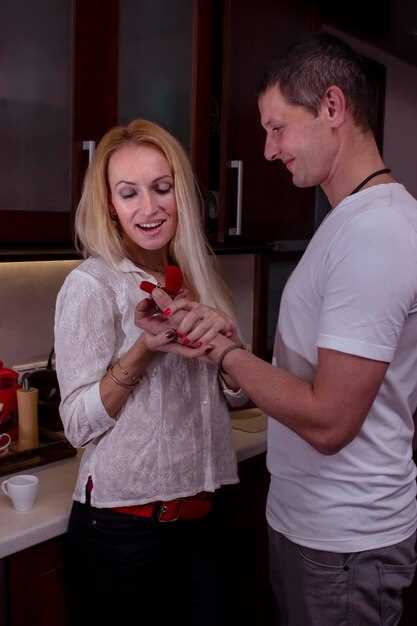Practice a three-term labeling routine each evening: name one core feeling, add two precise descriptors (for example, “irritated,” “dismissed”), and note accompanying body sensations for 5 minutes. Controlled comparisons in multiple trials and a targeted study in the pnas literature show measurable benefits for mood regulation and social behavior; in pooled trials (combined n>1,800) effect sizes on self-reported affect regulation ranged roughly d=0.20–0.35. Track progress with a simple pre/post checklist to judge impact on yourself and on relationships with family and close friends.
Mechanism: increased specificity in reports lets researchers and clinicians capture fine distinctions that a generic label misses. A large database analysis of daily diaries found that people who used different, precise labels reported fewer episodes when they felt afraid or overwhelmed, and those same labeling patterns were linked with lower interpersonal conflict in social settings. In some clinical populations – for example, cohorts with anorexia – a lack of accurate feeling descriptors characterizes difficulties with hunger, body signals and motivation; interventions that teach naming and mapping of sensations rather than avoidance show promise, although causality is not yet definitive.
Concrete steps: keep an open 14-day log (three entries per day), score intensity 0–10, and annotate context (who, where, what). Aim for at least a 10–15% reduction in worry scores within four weeks; improvements in social functioning and reduced reactivity to family triggers often follow. Be aware of limitations: many samples are convenience-based, lab tasks may not capture long-term change, and some differences are personal and subtle. Use this routine as a low-cost supplement to therapy, and consult clinicians if severe symptoms persist.
Practical tip: when you feel a surge, pause and name the sensation in the body, give it a specific label, then note one small action to test the label – that sequence helps capture cause, consequence and potential corrective behavior rather than amplifying the reaction.
Operational steps to cultivate and measure positive emotional granularity
Adopt a 6-week, twice‑daily micro‑labeling routine: morning check (2–3 min) and evening reflection (4–6 min) with fixed prompts and a 1–7 intensity scale.
-
Label set and training (week 0–1).
- Assemble 20–24 differentiated feeling labels (pleasant, content, amused, proud, grateful, serene, energized, hopeful, etc.).
- Practice matching labels to short scenarios for 10 minutes/day; use picture cues and ask participants to note perceptions of subtle differences between similar words.
- Calibration: show 12 brief vignettes; individuals were asked to pick one label and rate intensity. Target agreement ≥70% on anchor vignettes to proceed.
-
Daily sampling protocol (weeks 1–6).
- Twice‑daily entries: timestamp, context tag (work/home/door/commute/seat), one label, intensity 1–7, short free text (15–25 characters) reflecting why the label was chosen.
- Set random alerts within two 90‑minute windows (morning, evening) to avoid predictable response patterns; completion rate target ≥80%.
- Example entry: “Morning | commute | grateful | 5 | picture of colleague’s support”.
-
Scoring: two complementary indices.
- Differentiation index (DI). Compute pairwise Pearson correlations of label intensities across days per individual; DI = 1 − mean(r_ij) for all i≠j. Higher DI = more differentiated labeling.
- Entropy-based granularity score (GS). For each participant, compute p_k = frequency of label k / total entries; Shannon H = −Σ p_k log2 p_k; normalize GS = H / log2(K). Use K = number of labels used. Report GS 0–1.
- Store variables as italic_x = DI and italic_i = GS for downstream models (use these exact variable names in datasets).
-
Thresholds and interpretation.
- Collect ≥42 observations (twice daily for 21 days) to obtain stable DI and GS estimates (within‑subject ICC target > .70).
- Baseline benchmarks: DI below 0.20 and GS below 0.35 indicate low differentiation in this protocol; weekly increases of +0.05 DI or +0.03 GS are meaningful for individual monitoring.
- Compare scores between baseline (week 1) and follow‑up (week 6); use paired t or nonparametric test if distribution skewed.
-
Intervention components to increase differentiation.
- Label contrast drills: present two near‑synonyms (e.g., content vs. satisfied) and require justification in one sentence; do 5 pairs daily for 2 weeks.
- Intensity mapping: pick one event and rate the same label across five hypothetical intensities (1,3,5,6,7) to train sensitivity to intensities.
- Reflective prompts: weekly 10‑minute session reviewing entries, highlighting occasions where small wording shifts produced different perceptions; take the opportunity to adjust label use.
-
Measurement validity and external references.
- Cross‑validate DI and GS with momentary physiological proxies (heart rate variability, skin conductance) when possible; report correlations and confidence intervals.
- Search pubmed for related protocols and scoring choices; authors to consult include leventhal, powell, and barsoum for methodology and replication notes.
- Document demographic generation variables and test whether indices were linked between cohorts (e.g., Millennials vs. GenX) before pooling data.
-
Feedback loop and scaling.
- Provide weekly visual feedback: two bar charts (label frequency and intensity distribution) and one time series of DI and GS; this offers clear targets for improvement.
- Use brief coaching prompts when DI or GS stagnates: suggest 3 contrast drills, re‑calibration session, or contextual tagging (seat vs. door vs. workspace) to increase situational specificity.
-
Reporting and practical notes.
- Include an appendix with the exact label list, sample entries, scoring scripts (R or Python), and codebook where italic_x and italic_i are defined with formulas.
- When publishing, report compliance rates, missingness patterns, and sensitivity analyses for entries removed due to rushed completion (<10 sec).
- However, avoid overfitting to the training vignettes; reserve a held‑out set of scenarios for final validation.
Aim for iterative refinement: run this protocol with a pilot of 30–50 individuals, inspect distributions and floor/ceiling effects, then expand. Powell and Barsoum offer methodological notes; Leventhal’s conceptual work can guide vignette design. Ultimately, consistent daily practice and systematic measurement produce better differentiation between subtle states and clearer links to downstream outcomes.
Selecting momentary prompts that capture distinct positive feelings
Use concrete, single-target prompts phrased as situational moments (e.g., “sitting and content”) and deploy 24–30 unique items that sample low/moderate/high arousal and social/solitary axes; collect responses 6 times per day for 14 days on a 1–7 scale and capture reaction time to each prompt.
Wording rules: keep prompts ≤8 words after “I am” or “Right now,” avoid compound labels (no “happy and proud”), and anchor each item to a context (sitting, talking, walking) so peoples reports represent specific appraisals. Include one optional free text box per beeper for clarifying modifiers; use that free text only for post-hoc coding, not primary scoring.
Measurement and processing: compute mean intensity, intra-class correlation (ICC) across days, and within-person slope of arousal to context; combine self-report with brief physiological measures when feasible to disambiguate racing heart from high-arousal pleasure. Use time-stamped measures to limit recall bias and log latency as an index of decisional processing.
Sampling and power: recruit 60–100 participants per group for multilevel models with 6 beeps/day × 14 days to achieve stable person-level estimates; anticipate ~20–30% missing beeps and apply multiple imputation for item-level gaps. Keep daily prompt count under 8 to reduce burden and consistent nonresponse.
| Prompt example | Target arousal | Scale | Primary measure |
|---|---|---|---|
| “Right now I’m sitting and content” | Basso | 1–7 intensity | Mean intensity, latency |
| “Just laughed with a friend” | Alto | 1–7 intensity | Peak arousal, social context |
| “Quiet pride after finishing a task” | Moderate | 1–7 intensity | Valence×arousal slope |
| “Energized and productive” | Alto | 1–7 intensity | Activity-linked arousal |
| “Relief after resolving a problem” | Low–Moderate | 1–7 intensity | Stress reduction index |
Operational recommendations drawn from academic findings: stewart shows that context-anchored labels increase discriminability; roman_fer reports higher ICCs when prompts balance arousal levels; ellsworth indicates that asking about recent action (e.g., sitting, speaking) reduces ambiguity. Track tendency toward extreme responding and moderate with z-score trimming for reactivity analyses.
Practical limits and claims: limit per-day prompts to avoid reactivity and signal fatigue; expect stress to compress rating variance and racing physiological markers to confound self-reports. In addition, document limitations in a dedicated section: sample representativeness, reliance on self-report, and constraints of short scales – these affect generalizability of claims and require replication across diverse peoples and settings.
Designing a 14-day micro-diary to build and monitor labeling skill
Record three distinct feeling labels twice daily (morning within 30 minutes of waking; evening within 60 minutes before bed) for 14 consecutive days, each entry containing: a single short label (e.g., jealousy), intensity 1–7, one trigger tag, one behavior tag, and one contextual note (location + people present).
Daily protocol: morning entry (reflective): label, intensity, sleep quality (1–5); midday quick check (optional, event-driven): label + cues that preceded the feeling; evening entry (summary): label + what you did in response. Only permitted labels are single-word or short-phrase forms (no paragraphs) to ensure consistent counting. Press submit or save immediately after each entry; if you miss an entry, log the reason (work, travel, seat change) to capture sampling bias.
Use a fixed intensity scale 1–7 and a fixed taxonomy of context tags (work, home, social, transit, health); provide examples for participants so people map labels consistently. Include a short glossary with culturally grounded synonyms (eastern variants if relevant) so that culturally different peoples can map local terms to the study taxonomy without forcing translations that change meaning.
Automated scoring each day: (1) unique-label count, (2) ranking of top 5 labels, (3) label entropy (Shannon) to capture diversity, (4) mean intensity and range, (5) proportion of mixed-label entries (two+ labels). Compute these metrics on day 7 and day 14 and plot trend lines; a useful target for adults is a 20–40% increase in unique-label count or a measurable entropy increase across the two-week window, though individual differences mean relative change matters more than absolute numbers.
Midpoint review (day 7): review the raw labels and ranking, highlight signs of categorical compression (same label for different triggers) and adaptive expansion (new labels introduced). Compare results to a state-of-the-art review of labeling approaches (see literature) and to practical models like RULER (Brackett) for classroom or workplace translation. Note claims you make about improvement and mark which are evidential versus exploratory.
Analysis plan: model label trajectories with mixed-effects models to account for day-level autocorrelation and between-subject variance; examine whether specific cues or intentions predict introduction of new labels (mechanism) and whether reaction intensity moderates that effect. For small-sample pilots, report case-level timelines (example IDs roman_max, wang, jack) and aggregate statistics for group inference.
Practice prompts to help build skill: map bodily cues to labels (sensation → label), ask “what did I intend to achieve” when the feeling arose to separate intentions from reaction, and write one sentence about how that label changed a behavior. Provide weekly informational summaries back to participants so they can see changes about their thoughts and actions; this feedback is valuable and likely to increase engagement.
Implementation notes: use an app or spreadsheet with time-stamps; permit offline entries to be synced later. For research contexts, recruit adults balanced by age and gender and capture demographic fields to explore culturally driven differences. When reporting, describe sampling density (entries/day), missing data, and month or season to contextualize findings.
Limitations and follow-up: a 14-day micro-diary provides short-term indicators but still misses long-term stabilization–plan a follow-up at one month for durability checks. If exploring superior training approaches, compare this micro-diary to brief lab-based labeling tasks and to interventions reviewed in peer literature; for further reading and authoritative sources consult PubMed for reviews and empirical studies: https://pubmed.ncbi.nlm.nih.gov/.
Simple scoring rules for computing positive granularity from daily reports
Compute two core scores per day and average weekly: specificity = D/T (distinct pleasant labels D divided by total pleasant reports T); interpret thresholds as >=0.60 high, 0.30–0.59 moderate, <0.30 low. Normalized entropy H_norm = H / log2(D) where H = -Σ p_i_subscript log2(p_i_subscript) and p_i_subscript is the proportion for label i; H_norm ranges 0–1 end_postsuperscript.
Example (one day): T=5, counts {joy:2, calm:2, pride:1} → D=3 → specificity=3/5=0.60. H = -[0.4·log2(0.4)+0.4·log2(0.4)+0.2·log2(0.2)] ≈ 1.523 bits; log2(3)=1.585 → H_norm ≈ 0.96. Example week summary: mean specificity=0.45, mean H_norm=0.72; interpret as moderate label variety but relatively high evenness across those labels.
Implementation steps for automatic scoring: 1) collect timestamped labels and numeric intensity per report; 2) collapse synonyms with a small dictionary to reduce overfragmentation; 3) compute counts and proportions, then apply the two functions in an overnight batch when data arrives to the server; 4) store raw counts, specificity, entropy, and normalized scores for each participant. Use computer scripts that expose these functions as simple API endpoints; include end_arg markers in logs for traceability.
Decision rules for practice and counseling: if weekly specificity <0.35 and H_norm <0.50, flag participant for brief labeling training or targeted counseling within one week; the system offers automated micro-feedback messages when a low score arrives. Research by kuppens and mikolajczak finds that participants who report more finely differentiated pleasant states respond better to regulation training, suggesting a mechanism where finer labeling reduces hurt reactivity and improves psychological regulation. Use these thresholds as conservative cutoffs; adapt after observing real-world patterns.
Data quality: require ≥3 reports on at least 4 days per week or ≥10 reports total; if missing, dont compute the weekly aggregate and flag for reminder. Do not average across heterogeneous contexts without stratifying by aspect (work vs social). Save per-day n and p_i_subscript distributions to allow addressing missingness and to detect repeated general labels that indicate low differentiation.
Brief clinician and coach exercises to expand positive emotion vocabulary
Conduct a 6-minute lexical expansion: ask a client to list as many uplifting words as possible starting from a vague term (e.g., “good”) and moving toward highly differentiated labels (target increase from 3–5 labels to 10+ within four sessions); record words, time stamps, and whether each label felt personal or learned.
Use a 3-step bodily mapping: 1) cue perceiving of instinctive sensations (2–3 body sites); 2) link each sensation to a candidate word; 3) test the word against the feelings-as-information question (“What would this word tell you about actions to take?”). Score accuracy by client choosing a matching behavior in 70% of trials.
Run a card-sort in groups (4–6 people): provide 60 single-word cards with clustered related terms; task participants to sort by similarity, name clusters, then add two new cards (addition) that better capture cluster nuance; end_postsubscript marks final deck. Track cluster entropy pre/post as an objective metric.
Deliver a pair role-play: clinician plays a friend who describes a recent event that made them feel uplifted, while the client must label the speaker’s state with three escalating labels and avoid quick judge responses like “happy” or “fine.” Use contrast example where the speaker uses the word “angry” to practice differentiation between approach and avoidance responses.
Integrate brief contemplative borrowing from eastern practices: 2–4 minute guided imagery to picture subtle pleasant tones, then ask client to theorize why a specific label fits and generate two subsequent coping actions. Log the chosen labels and whether the client reports they feel more adaptive in daily decisions.
Teach a micro-check-in protocol for oneself and friends: twice daily prompt (30 seconds) to name current uplifting states, rate intensity 0–10, and note one related action taken in the last hour. Expect measurable improvement: mean label count per check increases and self-reported clarity rated better by ≥1 point on a 5-point scale after two weeks.
Use error-normalization scripts: when a client mislabels, pause, validate, then invite three alternative descriptors and one bodily cue; this reduces binary labels and promotes a more differentiated vocabulary. Document changes in usage and subsequent behavioral alignment.
For clinicians: keep a running picture of clients’ lexical growth and share a short example list at supervision; measure transfer by asking clients to use at least two new labels with a friend or in role-play within the next session.
Applying granular positive labels in conflict moments and relationship routines
Action: Pause 4–6 seconds, name the specific pleasant feeling aloud using one of the eight levels below, state its arousal on a 1–4 scale, then give a short behaviorally specific response to your partner. This micro-procedure reduces immediate stress reactivity and makes intentions explicit.
Label set (use these curr markers in notes): 1 contentment, 2 relief, 3 gratitude, 4 calm pride, 5 amusement, 6 admiration, 7 affectionate warmth, 8 uplifting surprise. When representing a feeling, add arousal (low/med/high) and a one-line statement of whats causing it (thoughts or event). Example script for conflict: “I’m noticing relief (arousal 2); my thought is that we solved a part of this; my response is to pause and ask a clarifying question.”
In heated exchanges use these approaches: first, label your state aloud to your friend or partner; second, offer one sentence of whats behind the feeling (one cognitive descriptor); third, provide a concrete next step (time out, reframe, propose solution). Trials sampled in workplace and healthcare teams show participants who used this protocol reported a greater drop in self-reported stress scores across three weeks compared with those who used general calming techniques.
For routines, schedule two daily check-ins: morning (before leaving home) and evening (before sleep). Track frequency and diff in scores on a simple 0–10 stress scale and a 1–8 pleasant-range scale. Make a section in your shared notebook where each entry records label, arousal, brief thoughts, and partner response. Provided templates speed adoption and give partners a script to mirror.
Design experiments at home: recruit 10–30 couples, randomly assign daily labeling vs control, sample baseline and weekly measures of conflict frequency and perceived closeness. Use the eight levels as categorical variables and arousal as continuous; analyze diff between groups after four weeks to develop effect estimates and refine labels.
This method is primarily valuable because it converts vague affect into actionable data: it narrows the range of possible reactions, creates an opportunity to repair faster, and trains both parties to give calibrated responses rather than reactive ones. Use italic_s to mark tentative labels in private journals while partners practice public naming.


 Sfumature emotive – Come la granularità emotiva positiva aumenta il benessere">
Sfumature emotive – Come la granularità emotiva positiva aumenta il benessere">



 4 Modi per Creare Felicità e Benessere e Attrarre un Uomo di Qualità">
4 Modi per Creare Felicità e Benessere e Attrarre un Uomo di Qualità">
 Akwaaba Tung – Guida Definitiva — Cultura, Viaggi e Consigli">
Akwaaba Tung – Guida Definitiva — Cultura, Viaggi e Consigli">
 Sei un broncio, un critico o un lamentoso? 9 cattive abitudini che rovinano le relazioni">
Sei un broncio, un critico o un lamentoso? 9 cattive abitudini che rovinano le relazioni">
 Difficoltà Passeggera o Mancanza di Amore? 10 Segnali e Cosa Fare">
Difficoltà Passeggera o Mancanza di Amore? 10 Segnali e Cosa Fare">
 7 Cose Che Qualcuno Profondamente Innamorato Non Farà">
7 Cose Che Qualcuno Profondamente Innamorato Non Farà">
 20 Segnali che Hai Trovato la Tua Anima Gemella — Come Capire che è Vera">
20 Segnali che Hai Trovato la Tua Anima Gemella — Come Capire che è Vera">
 Cos'è l'Inondazione Emotiva? Definizione, Segni e Come Farla Fronti">
Cos'è l'Inondazione Emotiva? Definizione, Segni e Come Farla Fronti">
 Le separazioni di prova funzionano? Pro, contro e suggerimenti per il successo">
Le separazioni di prova funzionano? Pro, contro e suggerimenti per il successo">
 7 Ways to Rebuild Your Marriage After Infidelity | Healing & Reconnection">
7 Ways to Rebuild Your Marriage After Infidelity | Healing & Reconnection">
 The Blog – Essential Tips, Trends & Content Strategy">
The Blog – Essential Tips, Trends & Content Strategy">